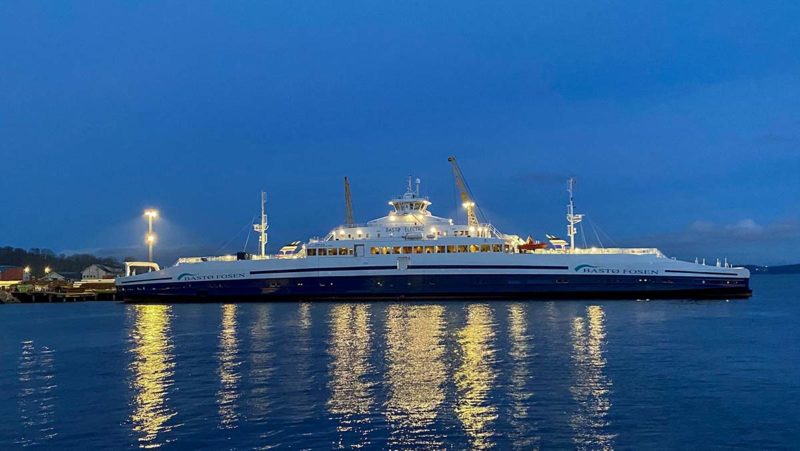One of Australia’s richest people, the software billionaire and Atlassian co-founder Scott Farquhar, has urged Australia to follow the example of Norway and introduce electric ferries, starting with the iconic route from Circular Quay to Manly.
Farquhar, who co-founded Atlassian with the better known energy transition activist and investor Mike Cannon-Brookes, says that Sydney should follow Norway’s lead by converting the city’s ferry fleet, including the Manly Ferry, to electric models.
In a Tweet, Farquhar pointed to the newly launched Bastø Electric ferry, the first of three battery electric ferries that will operate on Norway’s busiest ferry route and the world largest operating on an all-electric drive.
“Would be great to see electric ferries on Sydney harbour as part of our plan to net zero emissions. Should the new Manly ferries be electric,” Farquhar asked.
Would be great to see electric ferries on Sydney harbour as part of our plan to net zero emissions. Should the new Manly ferries be electric? https://t.co/cCgG3FsJLw
— Scott Farquhar (@scottfarkas) March 1, 2021
The Basto ferry was constructed by the Turkish Sefine Shipyard, with battery and charging systems supplied by Siemens Energy. The ferry carries 4.3MWh of battery storage supplied by Siemens, and is able to rapidly recharge at ports, accepting a massive 9MW of recharging capacity.
The ferry has the capacity to transport up to 200 vehicles and 600 passengers, making up to 24 journeys between the busy 10.5km Moss-Horten route each day. It will help carry the 3.8 million passengers and 1.8 million vehicles that travel along the Moss-Horten route each year.
The shift to electric ferry models is expected to reduce the greenhouse emissions footprint of the service by 75 per cent once the full fleet is operational by 2022.
“The Moss-Horten ferry line is a lifeblood for both residents and businesses. This new ferry is a huge boost for us and also contributes to a green shift for the whole region,” CEO of Bastø Fosen, Øyvind Lund, said in a translated statement.
Sydney’s fleet of ferries, including those that operate on the busy City-to-Manly route, run on turbo-charged diesel engines, and have been criticised for being inefficient, and as polluting per passenger as those travelling in cars.
While ferryies operate as a mass-transit public transport service, the emissions footprint of the ferries can often be similar to that of a private vehicle.
Studies of the emissions footprint of the Sydney ferry fleet round that the low energy efficiency of ferry transport meant that there were minimal emissions benefits from the fleet of diesel fuelled ferries, unlike rail and bus travel.
A 2012 report prepared for the NSW Independent Pricing and Regulatory Tribunal (IPART), suggested lower utilisation rates were a challenge for Sydney’s ferries.
“Emissions per person‐kilometre travelled are nearly the same for private car and for ferry. This surprising conclusion arises because ferries are not particularly fuel‐ efficient means of travelling, and because average seat utilisation on ferries (on a 24 hour basis) is quite low,” a report prepared by Sapere Research Group for IPART said.
“Thus, there is no emission externality advantage to ferries compared to private cars. In contrast, rail and bus modes of transport are quite fuel efficient and experience higher seat utilisation factors than ferries.”
A transition to electric ferries, which provide the opportunity to power such vessels with sources of zero emissions electricity, could help create an emissions benefit for ferry travel.


